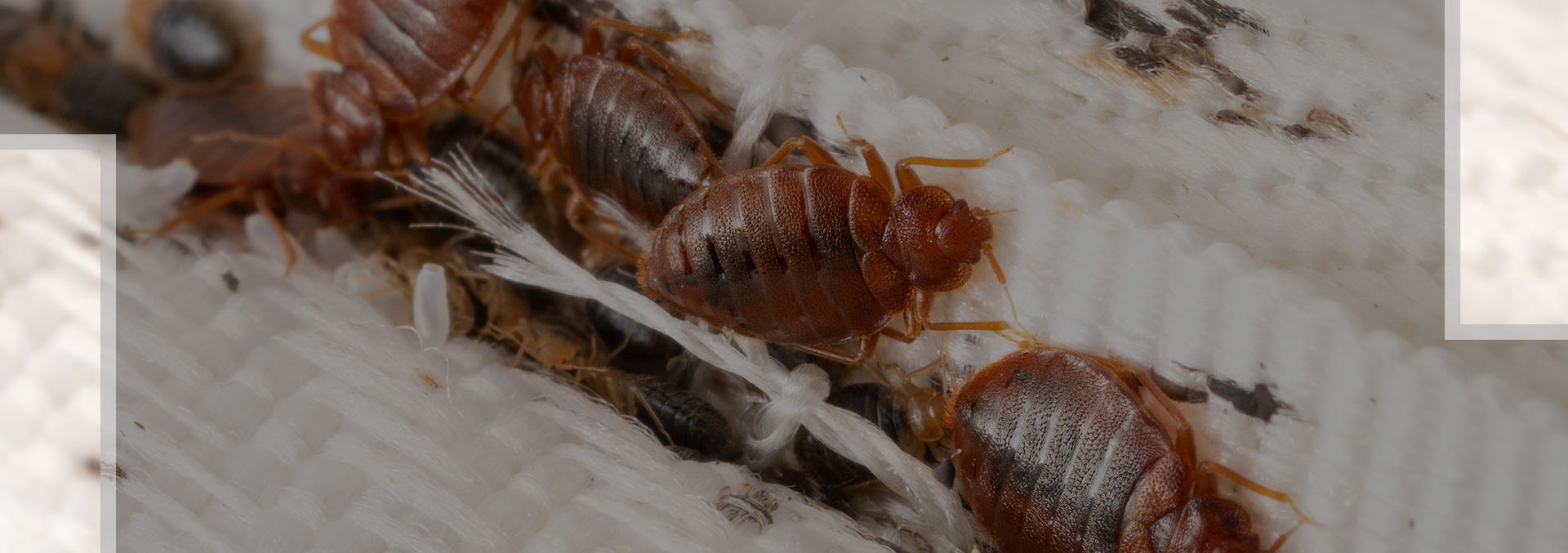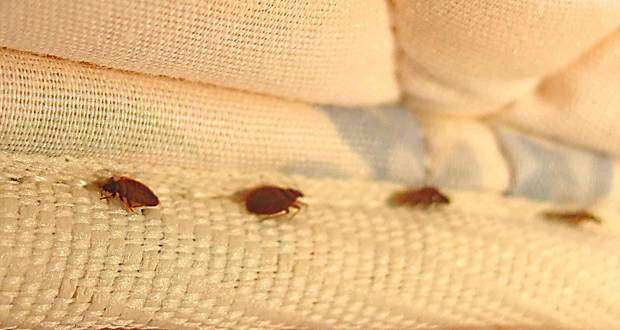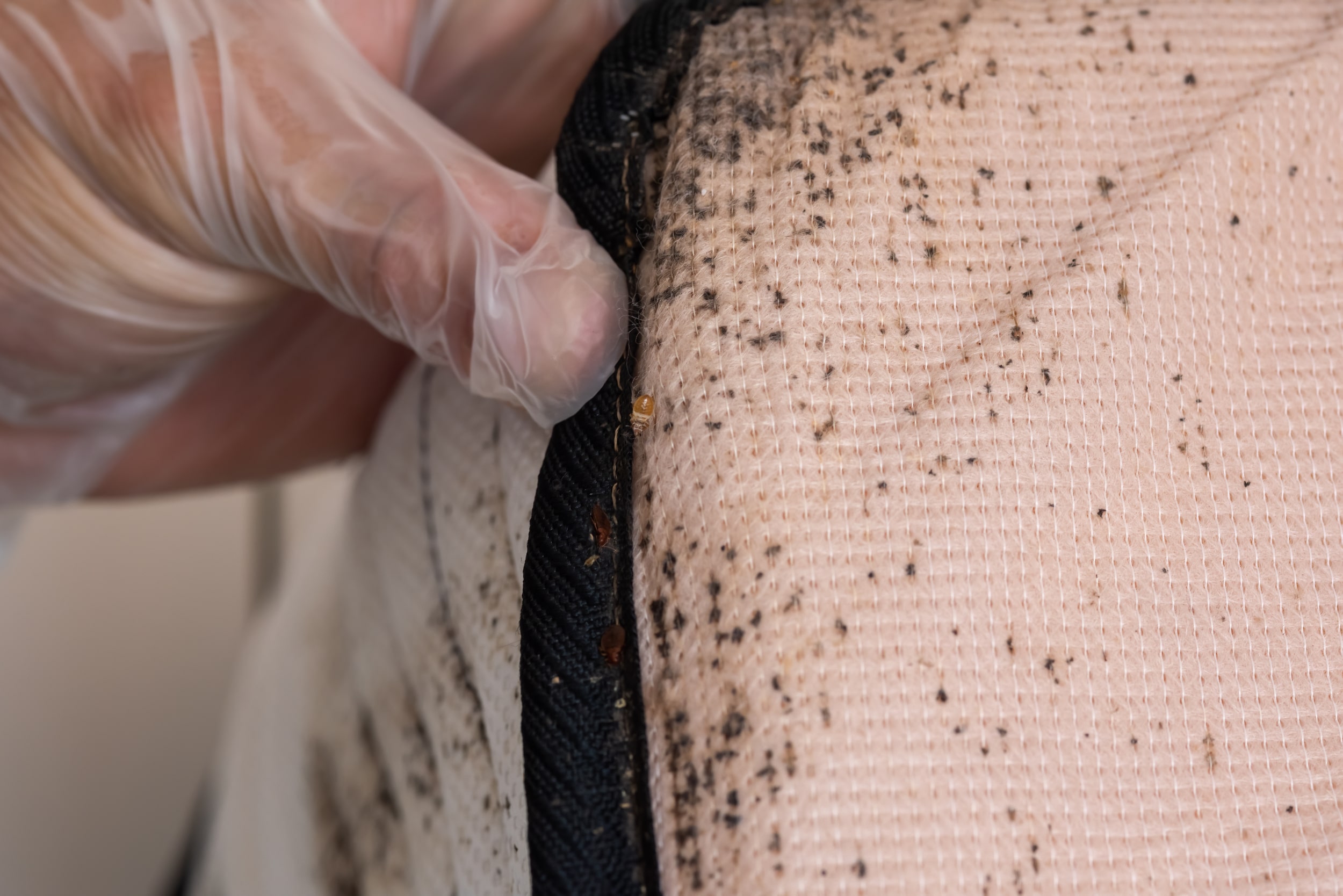Florida’s sun-soaked coastline, mild winters, and steady influx of travelers make it an attractive destination for both residents and tourists. Unfortunately, these favorable conditions also support a range of pests, including bed bugs. These tiny, nocturnal insects feed on human blood and can thrive in homes, hotels, and other residential or commercial spaces. In places like Fort Pierce and neighboring Vero Beach, the warm climate and constant movement of visitors can contribute to bed bug activity year-round.
This service page explains why bed bugs are so prevalent in Florida, how to spot a potential infestation, and the critical steps you can take to eliminate them. While bed bugs may be small, their impact can be substantial—causing restless nights, itchy bites, and heightened anxiety for those affected. By understanding what attracts bed bugs, the risks of ignoring them, and the benefits of working with a professional bed bug exterminator, you can protect your property and restore your peace of mind.
Why Bed Bugs Flourish in Florida

1. Mild, Year-Round Temperatures
In many parts of the country, bed bugs can see a dip in activity during cold winters. Florida’s climate, however, remains consistently warm. With indoor heating or cooling systems and mild outdoor temperatures, bed bugs enjoy conditions that allow them to breed continuously. They can hide in seams of mattresses, upholstery, and even behind wallpaper or electrical outlets—growing their populations in the absence of harsh seasonal changes.
2. High Tourism and Visitor Turnover
Areas like Fort Pierce and Vero Beach cater to tourists seeking sunny beaches, watersports, or casual getaways. While great for local businesses, the flow of short-term guests means luggage, clothes, and personal belongings move in and out of accommodations regularly. Bed bugs love to hitch rides in suitcases, backpacks, or folded clothing, so even a single room with a hidden infestation can spread the problem to new locations if overlooked.
3. Dense, Varied Housing
Florida’s mixture of condos, single-family homes, apartments, and hotels can inadvertently help bed bugs spread. In multi-unit buildings, bed bugs easily migrate from one unit to another through shared walls, electrical conduits, or hallways. Once bed bugs become established in one area, they often spread to nearby rooms or properties, especially if the infestation isn’t identified early.
4. Steady, Accessible Food Sources
Bed bugs feed mainly on human blood. In Florida’s populous regions, they seldom struggle to find hosts. Whether in a bustling urban neighborhood, a suburban home, or a rural setting where seasonal workers or guests come and go, bed bugs have ample opportunity to feed and reproduce. For businesses such as hotels, dormitories, or healthcare facilities, the constant turnover of people creates the perfect environment for these pests to thrive unless diligent inspections and controls are in place.
Telltale Signs of Bed Bugs
1. Red, Itchy Bites
One of the most common first indicators of bed bugs is waking up with small, red welts that line up in a row or appear in clusters on exposed skin. Bites may not be immediately noticeable, but over time they can become itchy and irritating. While some individuals have pronounced reactions, others might show minimal symptoms, allowing infestations to worsen before anyone notices.
2. Specks of Blood or Rust Stains
After feeding, bed bugs may leave small blood spots on sheets, pillowcases, or mattresses. These appear as tiny, dark red or rusty dots. Crushing a fed bed bug inadvertently can result in a more prominent stain. If you notice unexplained spots on bedding or furniture, it’s a strong indication that bed bugs could be present.
3. Black “Pepper-Like” Droppings
As bed bugs digest their blood meal, they excrete waste that often looks like tiny, dark specks, reminiscent of ground pepper. These droppings might appear near mattress seams, headboards, baseboards, or any crevices bed bugs use for hiding. If you wipe these spots with a damp cloth, they typically smear into a dark red or black stain.
4. Shed Skins or Eggshells
Like other insects, bed bugs molt and leave behind translucent exoskeletons. These discarded skins often accumulate where bed bugs cluster. Their eggs—pale, about the size of a pinhead—adhere to surfaces in tight cracks and crevices. Finding eggs or shed skins in mattress seams, furniture, or floorboard cracks is a glaring sign of active breeding.
5. Musty Odor
Large or long-standing bed bug infestations sometimes produce a faintly sweet or musty odor, caused by the insects’ pheromones and excretions. While odor alone is less reliable than physical evidence, it can reinforce suspicions if you also see bites, stains, or droppings.
Risks of Ignoring Bed Bugs
1. Rapid Population Growth
Bed bugs multiply quickly. A single adult female can lay dozens of eggs over her lifetime, and these eggs hatch within roughly two weeks under favorable conditions. If left untreated, what starts as a small problem can escalate into hundreds or thousands of bed bugs in a matter of months, making treatment more challenging and expensive.
2. Sleep Disruption and Anxiety
Few things are more unsettling than the thought of being bitten at night. Families often experience anxiety, insomnia, or psychological stress from knowing that bed bugs might be active while they sleep. Extended infestations can seriously impact well-being and daily functioning.
3. Worsening Allergic Reactions
Some individuals develop pronounced allergic responses to bed bug bites, resulting in swollen, itchy welts. In rare cases, bites can trigger more severe reactions that require medical attention. Children, elderly individuals, or those with compromised immune systems may be particularly vulnerable to repeated bites and the associated health effects.
4. Spread to Neighboring Units or Properties
In multi-unit housing or adjacent commercial units, bed bugs do not respect boundaries. They crawl through walls, wiring, or vents, quickly migrating from an infested unit to a neighboring one. As a result, ignoring a suspected infestation can inadvertently cause bed bugs to spread throughout the building or even into separate structures.
5. Damage to Reputation
For commercial establishments like hotels, restaurants, or retail shops, bed bug sightings can severely damage customer trust and reputation. Negative word-of-mouth or online reviews can lead to lost business and tarnished public perception. Even homeowners may struggle if they decide to sell a property known to have a history of bed bug problems.

Why a Professional Exterminator Is Crucial
1. Accurate Identification and Inspection
Bed bugs can be mistaken for other small pests, such as carpet beetles or fleas. A trained bed bug exterminator knows how to distinguish bed bugs from lookalike insects and pinpoint their most common hiding places. Using specialized equipment like detection dogs, flashlights, or inspection mirrors, professionals thoroughly examine furniture, bedding, and baseboards to gauge the severity of the infestation.
2. Comprehensive, Multi-Stage Treatment
Eradicating bed bugs typically requires addressing all life stages—eggs, nymphs, and adults. Even if adult bed bugs are eliminated, eggs that remain hidden can hatch later and reignite the infestation. Professional exterminators use targeted methods—such as heat treatments, insect growth regulators, or safe chemical applications—that thoroughly address each stage of a bed bug’s life cycle.
3. Safe Handling of Products
Some potent pesticides can be hazardous if used incorrectly. Professionals apply these products in a way that maximizes their effect on bed bugs while minimizing exposure risk to people and pets. Knowing which chemicals work best for certain settings, and how to deploy them in tight or sensitive areas, ensures optimal results without jeopardizing occupant health.
4. Reduced Risk of Resistance
Bed bugs in certain regions may develop resistance to common DIY or over-the-counter pesticides. Professionals stay updated on evolving resistance patterns and use products or techniques likely to remain effective. This adaptability helps prevent repeated or failed treatments that waste time and resources.
5. Follow-Up and Prevention
Most bed bug extermination plans include some form of follow-up inspection or treatment. Because bed bug eggs can hatch weeks after the initial process, verifying that no new insects appear is essential. Exterminators also provide guidance on prevention—such as monitoring bedding, sealing cracks, and spotting early warning signs—to stop re-infestation in the future.
Typical Methods for Bed Bug Treatments
1. Inspection and Mapping
A detailed inspection reveals where bed bugs are most concentrated. Exterminators often check mattresses, headboards, bed frames, nightstands, upholstered furniture, and even electronics. They also look behind baseboards or wall hangings. Mapping out these areas ensures that the forthcoming treatment targets all the pests’ hiding spots.
2. Steam or Heat Treatments
High temperatures can quickly kill bed bugs and their eggs, penetrating deep into carpets, cushions, and furniture seams where chemicals might not always reach effectively. Professional heat treatments raise the room’s temperature to levels lethal for bed bugs, typically above 120°F, for an extended period. Alternatively, handheld steamers can be used in select problem spots.
3. Targeted Chemical Applications
Professionals may apply insecticides along baseboards, in cracks, or behind furniture. Some formulations include insect growth regulators that hinder bed bug development. Strategically placing these products reduces adult populations while stopping juveniles from reaching maturity. Occupants might be asked to vacate the premises for several hours to allow treatments to dry and air out.
4. Vacuuming and Physical Removal
Before or during treatments, thorough vacuuming of mattresses, floors, and upholstered surfaces helps remove live bed bugs, egg clumps, and droppings. Using a vacuum with a HEPA filter is recommended to avoid redistributing allergens or bed bug debris. Immediate disposal of the vacuum contents in sealed bags further limits the chance of spread.
5. Mattress Encasements and Monitors
Encasing mattresses and box springs in bed bug–proof covers traps any remaining insects inside, denying them additional blood meals. Bed bug interceptors—simple, cup-like traps placed under bed legs—help monitor ongoing activity. If any bed bugs remain, they become trapped in these devices, signaling the need for additional measures.

Service Areas
Fort Pierce
Nestled along Florida’s Treasure Coast, Fort Pierce boasts beautiful beaches, vibrant downtown areas, and a rich history. Yet these appealing qualities also draw tourists, seasonal residents, and year-round locals. The constant flux of visitors, short-term stays, and a warm climate can introduce bed bugs into hotels, rental properties, and family homes. Our bed bug exterminator services in Fort Pierce focus on quick identification, targeted treatments, and effective prevention to restore comfort and confidence for property owners and guests alike.
Vero Beach
Located just north of Fort Pierce, Vero Beach is prized for its cultural attractions, serene beaches, and high-end residential areas. However, even luxury settings can face bed bug invasions. Tightly packed condos, vacation rentals, and popular resort destinations create numerous avenues for bed bugs to gain a foothold. Our comprehensive bed bug treatments in Vero Beach prioritize thorough inspections and safe application methods, aiming to protect both the value of properties and the well-being of those who live or visit here.
Why Our Bed Bug Treatments Excel
1. Localized Expertise
We understand the challenges of Florida’s climate and the ways bed bugs exploit tourism-driven locations like Fort Pierce and Vero Beach. This familiarity helps us tailor our approach for optimal results, targeting how bed bugs spread and taking advantage of local insights into buildings, housing styles, and traveler patterns.
2. Rigorous Inspections and Customized Solutions
No two infestations are exactly the same. Some may be limited to a single bedroom, while others spread across multiple units or floors. We adapt our approach based on the size of the affected area, the severity of the infestation, and the property’s layout. From compact apartments to sprawling resorts, we identify the most effective combination of treatments.
3. Safety and Minimal Intrusion
We recognize that families, employees, and guests need to continue daily activities with minimal disruption. Our treatments use proven methods that respect occupant safety while effectively targeting bed bugs. Clients receive clear instructions about preparation, expected timelines, and any temporary precautions needed to ensure success.
4. Ongoing Education and Support
Eradicating current bed bugs is only part of the process. We equip property owners with strategies for preventing re-infestations, including tips for inspecting secondhand furniture, properly laundering bedding, and recognizing early signs if bed bugs hitch a ride back. Should new concerns arise, our team stands ready to re-check and advise.
5. Fast Response and Lasting Results
Bed bugs breed rapidly, so swift action makes a difference in containing the problem. Our quick response times in both Fort Pierce and Vero Beach limit bed bugs’ capacity to spread. By combining thorough inspections, high-efficacy treatments, and follow-up checks, we strive for lasting relief that brings peace of mind back to the property.
Next Steps
If you’ve noticed unexplained bites, small blood spots on your sheets, or a musty odor in your sleeping areas, don’t wait. Contact us to learn more or schedule your service. Early intervention curbs the spread of bed bugs, reducing both treatment complexity and the disruption to your home or business.
Our comprehensive approach tackles every phase of a bed bug’s life cycle, ensuring that adults, nymphs, and eggs are addressed. Through proven techniques—ranging from heat treatments to precision chemical applications—we can help restore your space to a bed-bug-free zone. Whether it’s a residential bedroom in Fort Pierce or a large-scale hotel operation in Vero Beach, professional exterminator solutions can safeguard your property and allow you to sleep soundly once again.
Maintaining a Bed Bug–Free Environment
- Inspect and Clean Regularly
Routinely vacuum carpets, rugs, and furniture—paying particular attention to seams, edges, and under cushions. Wash bedding at high temperatures and dry on a hot cycle to kill any potential hitchhikers. - Be Cautious with Secondhand Items
If you purchase or accept used furniture, thoroughly examine it for signs of bed bugs, such as stains, shed skins, or egg clusters. Consider steam-cleaning or treating these pieces before bringing them indoors. - Use Mattress and Box Spring Encasements
Quality encasements trap bed bugs inside mattresses, preventing them from feeding or spreading further. Regularly check encasements for rips or holes and replace them as needed to maintain protection. - Declutter to Reduce Hiding Spots
Stacks of clothing, boxes, or papers give bed bugs additional places to hide. Keeping living or workspaces tidy makes inspections easier and deprives bed bugs of potential breeding grounds. - Stay Vigilant When Traveling
Inspect hotel beds, headboards, and upholstered furniture for any telltale signs of bed bugs. Keep luggage off the floor or use a stand. Once home, consider washing and drying all clothes in high heat to minimize the chance of transferring bed bugs. - Monitor for Early Warning Signs
Place bed bug interceptors under bed legs or furniture feet. These traps catch bed bugs as they travel, allowing you to spot activity before a full-blown infestation takes hold. If you detect any suspicious signs, act quickly to prevent larger issues.
By merging consistent housekeeping with professional exterminator treatments when needed, homeowners and businesses in Fort Pierce and Vero Beach can stay ahead of bed bug problems. Florida’s climate and active hospitality industry create ongoing opportunities for these pests, but swift identification and targeted solutions can curtail their spread. With the right mix of awareness, prevention, and timely intervention, you regain the tranquility and hygiene that allow you—and your guests—to rest easy.
